Dandelions
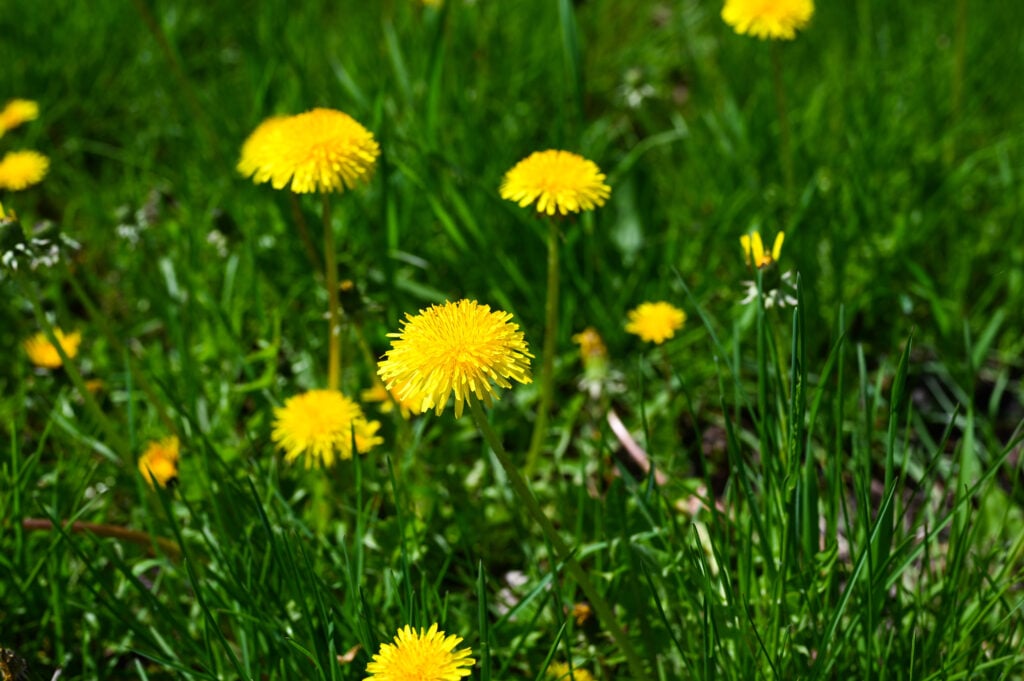
Learn why you should love and appreciate dandelions.
Is your lawn like ours, a beautiful sea of yellow dandelions? Yes, beautiful! Although dandelions are often considered to be a vile weed that gung-ho gardeners attack with gusto, we’re here to tell you that you should leave dandelions alone, or mostly! Once you learn about the benefits of these lovely plants, you’ll realize that they are nature’s gift to you, to your soil, to spring wildlife, and to children everywhere who happily collect yellow bouquets and offer them with sweet enthusiasm, as signs of love.
What are dandelions, actually?
Dandelions belong to a large genus of flowering plants in the larger family called Asteracae. There are many species of dandelions but the most common one is Taraxacum officinale. The yellow blossom of the dandelion is composed of many tiny little flower units which appear as one flower; this is a distinguishing feature of the family Asteracae. It is for this reason that another name for this family of plants is Compositae, because the blossom is actually a composite of many teeny flowers. Remember when we told you a while ago that reading Mia Kouppa would make you smarter?!
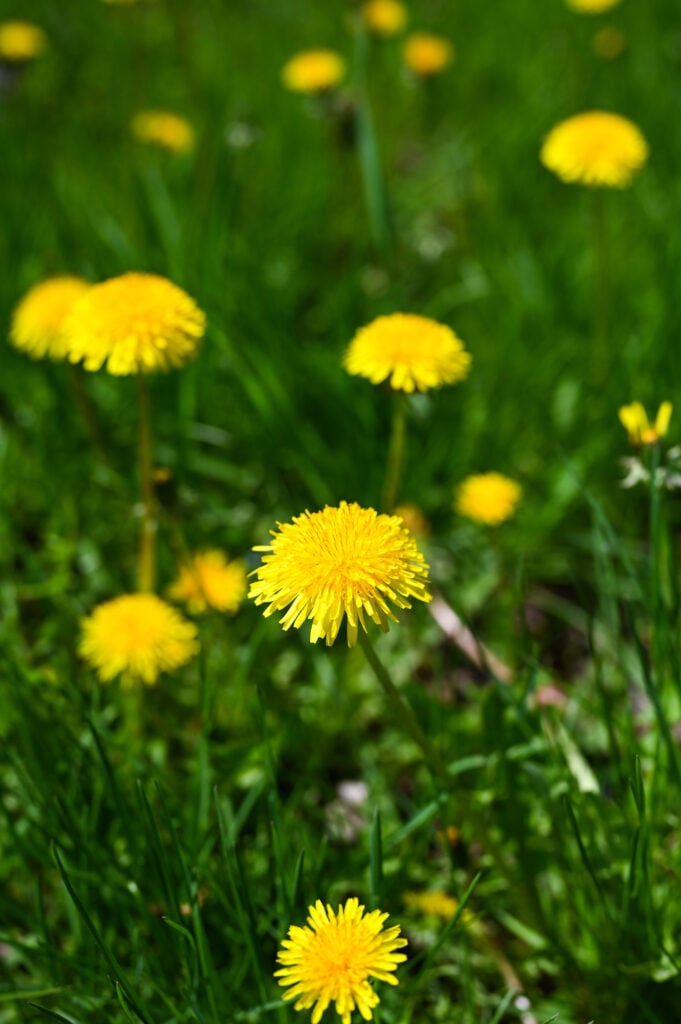
Dandelions were first introduced to North America from Europe, as colonists arrived with seeds packed away in their luggage. It is this European heritage which gives dandelions their common name. Along with the pretty yellow blossom, these perennial plants have leaves which form a rosette at the base of the stem. The smooth and hairless leaves have toothed edges and a spear shaped tip which someone thought resembles the sharp, pointed tooth of a lion, hence the name “dandelion” which comes from the French dent de lion, or lion’s tooth.
Because there are many subspecies of Taraxacum, there are other plants which are referred to as false dandelions; these are similar in appearance but botanically different from our featured superstar! There are a few easy way to tell if what you are looking at is truly a dandelion. T. officinale typically have stems without leaves and each hollow, beige coloured stem will produce only one blossom. If you break the hollow stem in two, it will release a milky white liquid; that sap is actually a natural latex! Anyone with a latex allergy will want to handle with care – or better yet, don’t handle at all!
You can read more about “true” dandelions versus their look-alike cousins the Carolina false dandelion and Cat’s ear in this lovely article that also has some very helpful photos.
Pin this post if you like it!
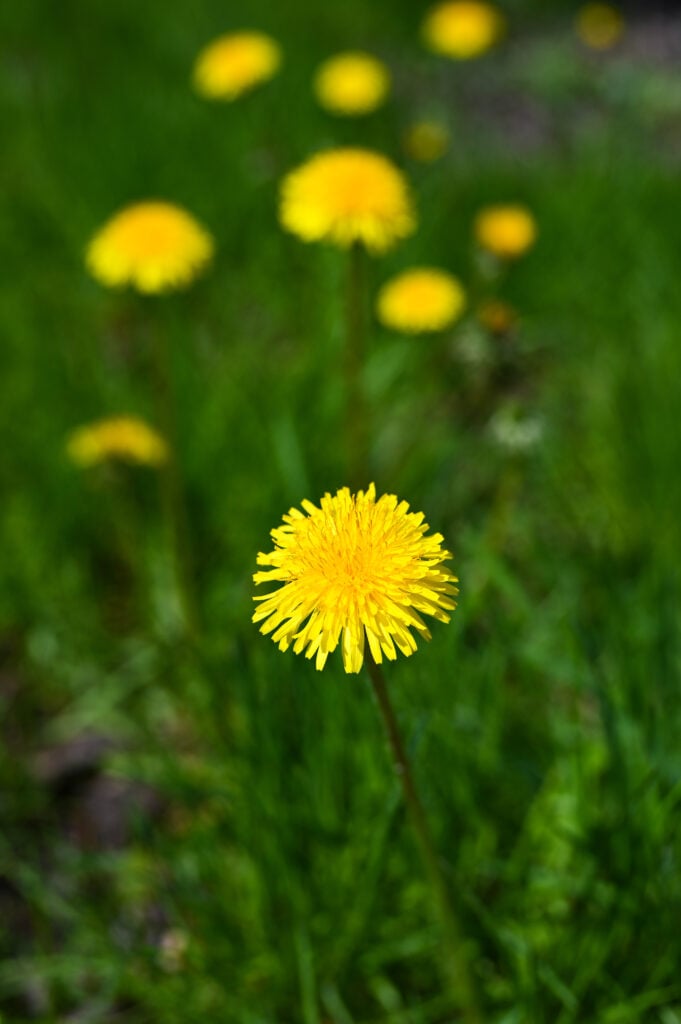
Are dandelions edible?
They are! In fact, the entire plant, from root to flower is edible, as well as delicious and highly nutritious. We grew up eating horta, the boiled leaves and the root bulb that we would forage from fields and farms with our parents, aunts, cousins and other Greek families we would meet along the way. You can read all about our horta adventures, along with a detailed method for foraging, preparing, cooking and eating the dandelion leaves by clicking here. Tender and young dandelion leaves can even be eaten raw, mixed in a salad. The flavour of both the cooked and raw leaves is slightly bitter and pairs really well with a bright citrus dressing.
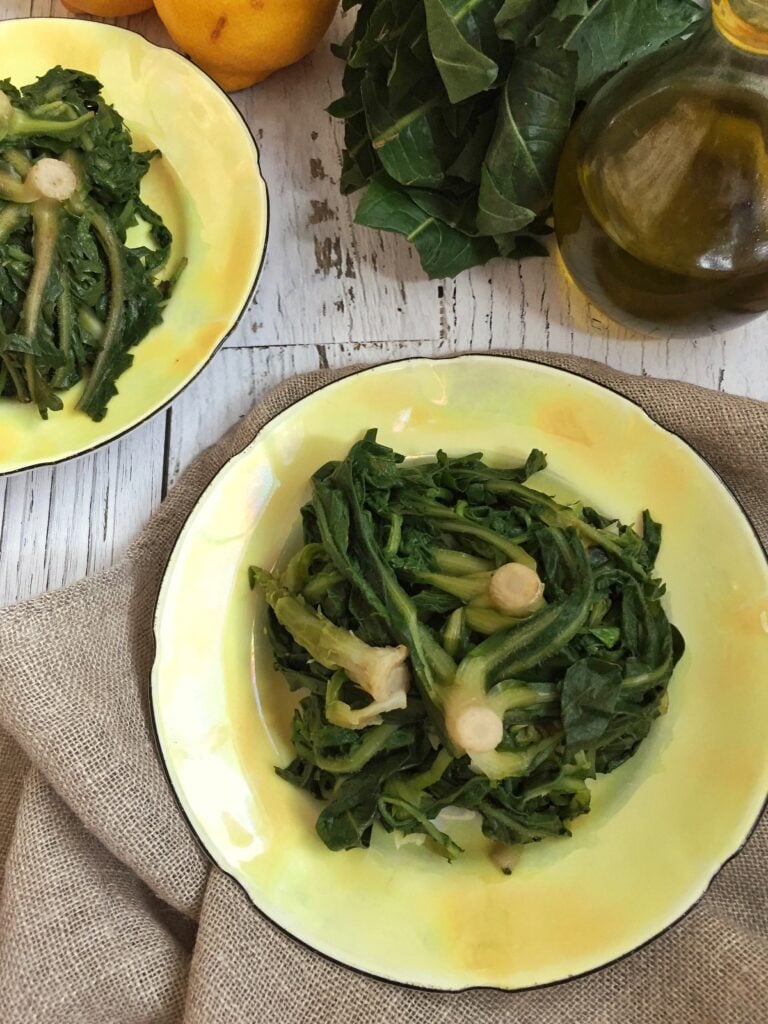
Nutritionally, dandelion greens are a superfood. Raw, they contain as much calcium, vitamin A, vitamin C, thiamine and riboflavin as most multi-vitamins. They are a source of fiber and iron and magnesium too! The leaves are also a good source of prebiotics, non-digestible carbohydrate molecules that have a positive role in both the maintenance and progression of gut microflora. This means that prebiotics are able to nourish the gut microbes living in your gastrointestinal tract and this then aids in digestion, the ability to absorb nutrients, your immune system and it also helps to prevent the growth of bad gut microbes. Not bad for a weed that grows freely in your backyard!
It’s not just the leaves which can be eaten however; the dandelion blossom and the entire root can be enjoyed as well. The flowers can be turned into dandelion honey (perfect for vegans who don’t consume regular honey), or tea and they can also be added to salads making your bowl of greens prettier, tastier and healthier. You can find recipes for the dandelion tea here, and for the dandelion honey here.
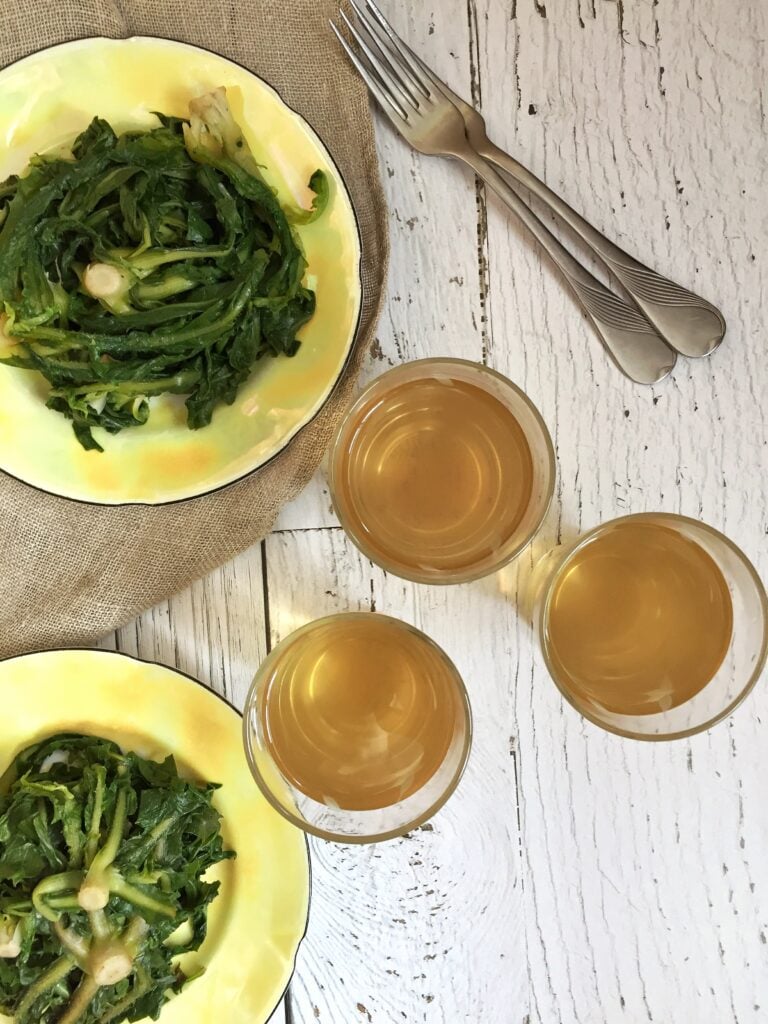
The root itself, which is high in calcium (you’ll read more about that later), can be dried and used to make a coffee substitute. If you would like to learn more about how you can do this at home, this article on harvesting and using dandelion roots is very informative.
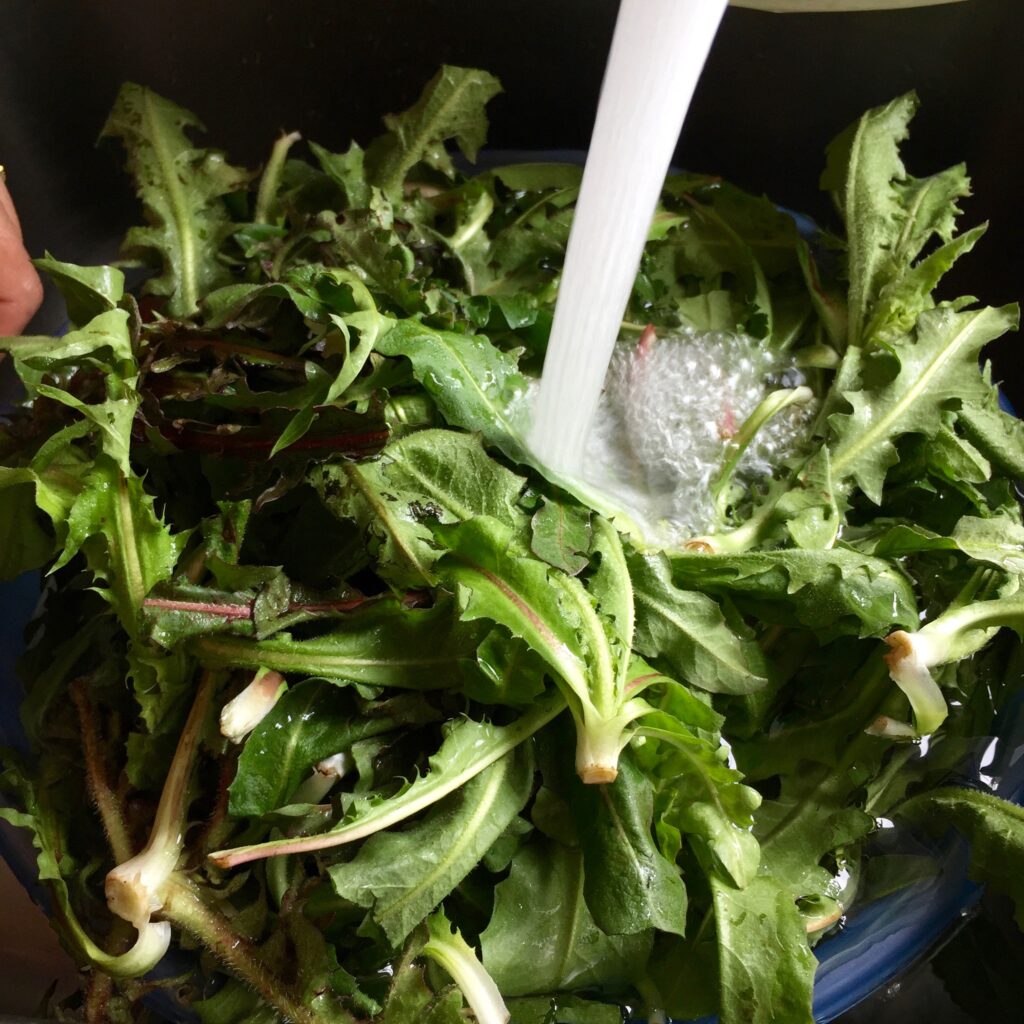
Do dandelions have medicinal properties?
Although the common name dandelion comes from the French, the current French term for dandelion is actually pissenlit, and this modern word literally translates to pee in the bed. Yup! You see, dandelions are said to be a natural diuretic, useful in eliminating the body’s excess fluid, and the French…well…they’re funny.
Humour aside, it seems that there is good scientific evidence available which points to the medicinal properties of dandelions. This supports the scientific name, Taraxacum officinale, which comes from the Greek words taraxos = disorder, akos = remedy and officinale = official. The vile weed that many people spend lots of hours and lots of money trying to get rid of is in fact a long proven “official” remedy for disorders of the kidney, liver and digestive system.
Along with the vitamins and minerals present in all parts of the dandelion plant, the root contains inulin which is known to stop the growth of pathogenic bacteria in the gastointestinal tract. Inulin can repress cancer, obesity and osteoporosis. The inulin content in the roots varies with the season however, and it is more prevalent in the autumn that it is in the spring.
The milky white substance, or sap, which is found in the stem of the dandelion plant is used as a treatment to dissolve warts, callouses, corns and dry patches of skin. If you are going to give this a try, always test a small patch of skin first to be sure you are not allergic.
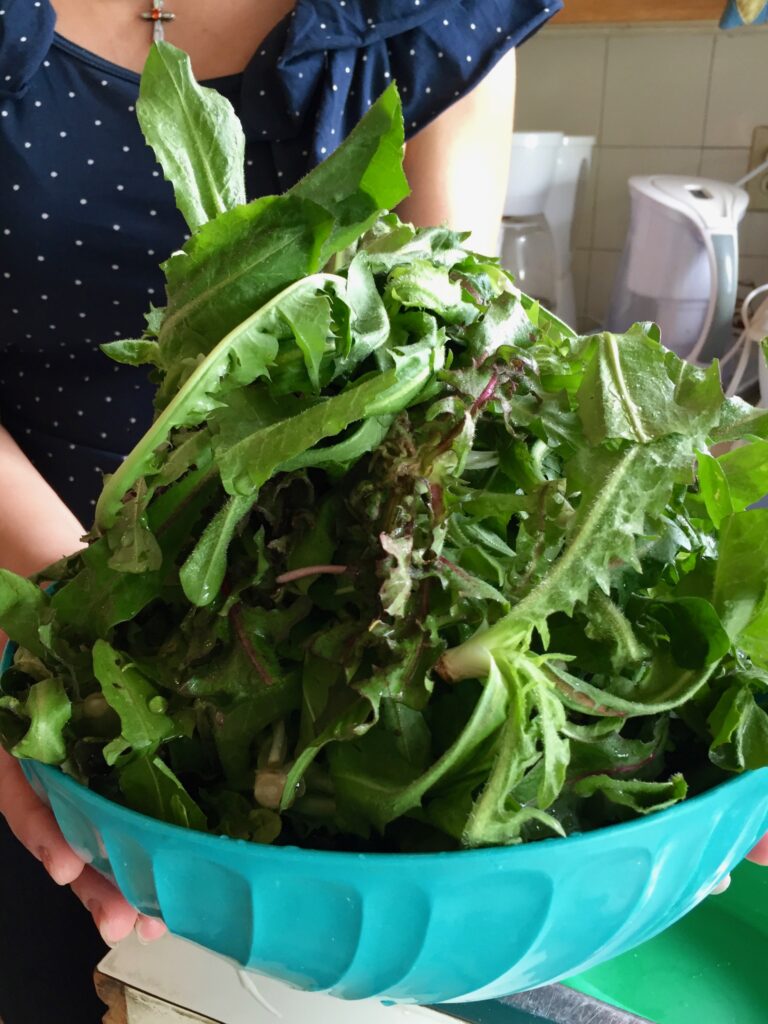
Are dandelions good for my garden?
If you see a lot of dandelions in a field or in your yard this is likely an indication that your soil needs some tender loving care, which the dandelions can provide. Dandelions grow pretty much anywhere, and particularly where there is compacted, non-fertile soil. The roots pull up from deep in the soil and aerate it with their strong tap roots. Because most other plants do not do well in compacted soil, dandelions are a great neighbour for them. By aerating the soil, dandelions help to create the soil conditions that other plants require to grow.
As already mentioned, dandelion roots are high in calcium. This is because they draw on the calcium found deep in the soil where their roots and their large tap root extend. A dandelion tap root (the main root) is typically 6 to 18 inches long – on older plants it can be even longer. In some instances it has been found to grow to a depth of 10 feet or more!
As the taproot extends deep into the earth it takes up the calcium and other nutrients found deep in the soil and then transfers it to the leaves, stem and the blossoms. The dandelions that you don’t harvest for eating or drinking should actually be mowed down and then left as mulch in the yard. As the organic material decomposes, all of the nutrients brought up from deep in the ground will enter back into the topsoil. Mulching your grass with grass clippings and and dandelions is the best recycling for your garden!
Finally, although you can weed your garden with a lot of elbow grease many people rely on harmful pesticides and herbicides to kill dandelions efficiently and quickly. The environmental impact on such an approach is well known, and not good. Living with dandelions actually results in living healthier and better.
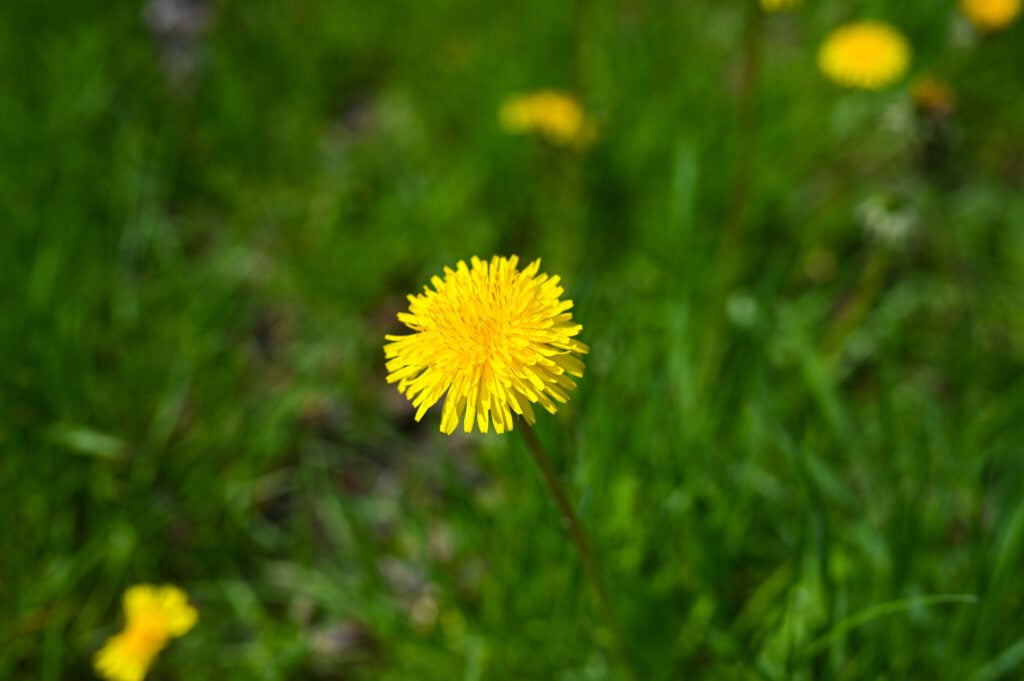
Are dandelions good for spring wildlife?
Yes, they are crucial for spring wildlife actually! The early spring appearance of dandelions provide an essential service to early season pollinators that are just starting to hatch, like native bees and other insects. We need these pollinators to help the rest of our garden, and our world actually, thrive and prosper! By destroying dandelions you are actually breaking a well orchestrated chain of events that is nature’s amazing way of supporting life of all kinds.

How should dandelions be harvested?
Now that we have convinced you that dandelions are garden gems that you can use in a variety of ways, here are a few tips for harvesting:
- You can harvest dandelion roots from late fall through early spring, when the plant is dormant and has stored up energy in the root. For medicinal purposes a fall harvest is best as this is when the root contains the highest level of inulin.
- If you want to eat the roots, then a spring harvest is best because winter freezing would have converted the inulin into fructose; this will make the roots tastier.
- You can use a special dandelion digger to dig up roots, but a sharp knife works just as well. You can read about the technique here, in our post on Horta.
- Regardless of what you plan to do with the dandelions you harvest, be sure to select dandelions from a place that is free from pollutants, herbicides, pesticides, or any other noxious substance. Avoiding areas where dogs and cats poop is also a good idea.
- Blossoms should be harvested when newly opened and with all the petals present. You can keep them fresh by placing the stems (with the blossoms still attached) in a bowl or vase of cold water.
- Harvest responsibly. Don’t trespass, and be sure to leave some dandelions behind for others to harvest, for the pollinators, for friendly critters and for soil biodiversity.
- Remember that dandelions flourish in the early spring, and by summer most of them are gone naturally. So harvest while you can!
We hope that you have found this post helpful!! Let us know what you think in the comments section, and if you have any questions or ways that you use dandelions, put those in the comments as well!
xoxo
Helen & Billie

I love dandelions and have lots in my backyard…I make stir fry and when young and tender put them with salad…a vinegar dressing and delicious..Italians have been know to pick the dandelions everywhere…thanks for the article…
You’re so welcome Irma! Italians and Greeks are similar in so many ways, including dandelion picking 🙂 We’ve never actually had them in a stir fry; do you use the leaves or the blossoms, or both? Sounds so perfect! Thanks for dropping a comment! xoxo Helen & Billie
Wonderful and interesting article! Thank you for encouraging others to help pollinators. I often feel sorry about how our suburbs are turning into ecological dead space with chemical treated lawns everywhere one looks. I am slowly trying to incorporate more native plants and flowers into my own garden.
Thank you Ana – we appreciate you taking the time to comment, and also for your kind words. We felt compelled to write this article as we too worry about all that is being done to create “perfect” landscapes, and the cost of doing that. We are trying to be more mindful in the way that we treat our own gardens and land as well – it’s a work in progress with much to learn…but the learning is fun! Thanks again for stopping by! xoxo Helen & Billie
Dandelions are truly special, and many people don’t value them. I cringe when people buy things to get rid of them in their lawn because I know how delicious they are!
We totally agree Nick! Everyone should learn to love this amazing superfood! Thank you! xoxo Helen & Billie
HI HELEN & BILLIE, I AM A GREEK AMERICAN MARRIED TO AN IRISH AMERICAN WHO BELIEVES HE HAS A GREEK SOUL. MY GROCERY STORES HAVE CULTIVATED DANDELIONS & WE BRAISE THEM AND ENJOY THEM OFTEN. MY YIYA & THEA WOULD HAVE LOVED THE EASE OF BUYING THEM AT THE MARKET!
Hi Christina! It is such a treasure to have a grocery story that sells fresh dandelion greens! Enjoy them!!! xoxo Helen & Billie